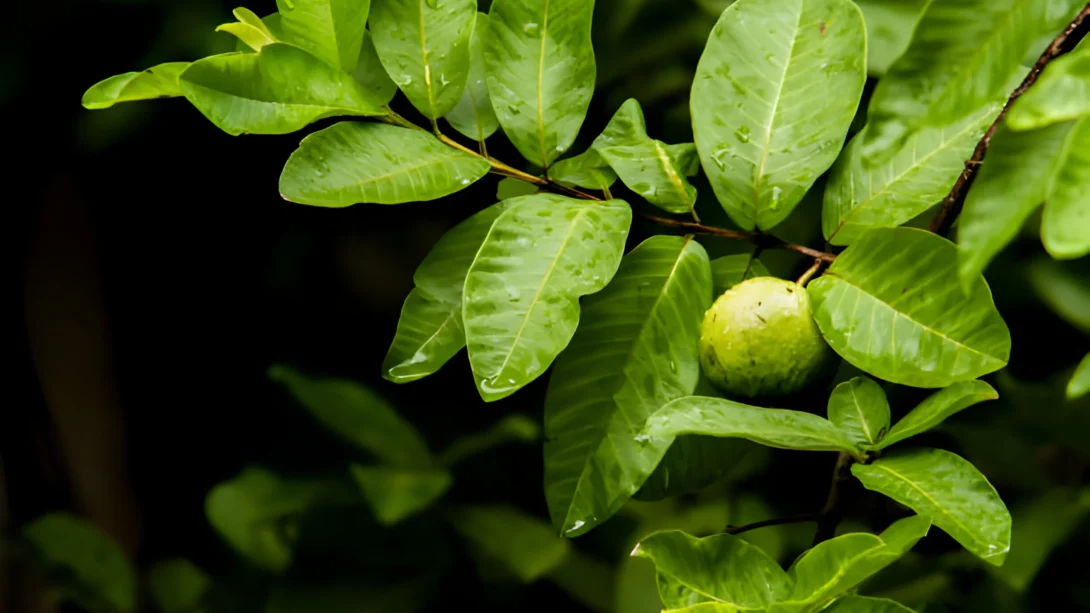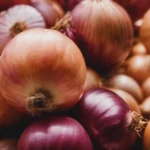Guava (Psidium guajava) is a tropical fruit beloved for its delicious flavor and numerous health benefits. Originating from Central America, guava trees have spread across the globe, thriving in both tropical and subtropical climates. With varieties ranging from the common apple guava to the exotic strawberry guava, there’s a type to suit every gardener’s taste. Growing guava from seed can be a rewarding endeavor, offering the chance to cultivate these nutritious fruits right in your backyard. This guide will walk you through the process, from selecting seeds to planting and care, ensuring your guava journey is a fruitful one.
Guava Seeds
Types of Guava Seeds Available for Planting
Guava seeds vary widely depending on the variety. Some popular types include the white-fleshed, pink-fleshed, and even the less common red-fleshed guavas. Each type offers a unique taste and growth habit, so consider your climate and taste preferences when selecting seeds.
How to Select High-Quality Guava Seeds
Choosing high-quality seeds is crucial for successful germination. Opt for fresh seeds from a reputable supplier, as guava seeds lose viability with age. Seeds should be clean, dry, and free from any signs of disease or damage.
Preparing to Plant
Best Time of Year to Plant Guava Seeds
The best time to plant guava seeds is in late winter or early spring, after the last frost when temperatures start to warm. This timing gives seedlings a full growing season to establish themselves.
Choosing the Right Soil and Preparing Your Planting Pots
Guavas prefer well-draining soil with a pH between 5.5 and 7.0. Mix equal parts potting soil, compost, and perlite to create a suitable growing medium. Use small pots or seed trays for planting, ensuring they have adequate drainage holes to prevent waterlogging.
The Significance of Soil pH and Drainage for Guava Seed Germination
Soil pH and drainage are critical for the successful germination of guava seeds. A slightly acidic to neutral pH encourages nutrient uptake, while good drainage prevents root rot, a common issue in waterlogged soils.
Planting Guava Seeds
Step-by-Step Guide to Planting Guava Seeds
- Soak the guava seeds in lukewarm water for 12-24 hours to soften the outer coating and encourage germination.
- Fill your pots or seed trays with the prepared soil mix, leaving a small space at the top.
- Place 2-3 seeds in each pot, covering them with a thin layer of soil—about 0.25 inches deep.
- Gently water the soil until it is moist but not waterlogged.
- Cover the pots with clear plastic to maintain humidity and place them in a warm, bright spot.
Ideal Depth and Spacing for Guava Seeds
Guava seeds should be planted at a depth of about 0.25 inches. If using seed trays, space the seeds at least an inch apart to allow room for the seedlings to grow without crowding.
The Role of Temperature and Moisture in Guava Seed Germination
Guava seeds germinate best at temperatures between 75°F and 85°F (24°C to 29°C). Consistent moisture is vital, but avoid overwatering. The plastic cover helps retain humidity, aiding in germination. Expect seeds to sprout in 2-8 weeks, depending on the variety and conditions.
How to Water Guava Seedlings Properly
Once your guava seeds have germinated, it’s essential to maintain consistent moisture without over-saturating the soil. Water the seedlings lightly, allowing the soil surface to dry slightly between waterings. This approach encourages strong root development and prevents issues like root rot.
The Importance of Sunlight for Young Guava Plants
Guava seedlings require ample sunlight to grow strong and healthy. Position them in a location where they can receive at least 6 hours of direct sunlight daily. If natural light is insufficient, especially in colder climates, consider using grow lights to supplement.
When and How to Fertilize Guava Seedlings
Begin fertilizing your guava seedlings about a month after germination. Use a balanced, water-soluble fertilizer diluted to half the recommended strength, applying it every 4-6 weeks. Avoid over-fertilization, which can harm young plants by causing salt buildup in the soil.
Transplanting Guava Seedlings
Signs That Your Guava Seedlings Are Ready to Be Transplanted
Guava seedlings are ready for transplanting when they have at least two sets of true leaves and are about 6-8 inches tall. This typically occurs a few months after germination, indicating they have developed a strong enough root system to handle transplanting.
Choosing a Permanent Location for Your Guava Plants
Select a sunny spot with well-draining soil for your guava plants. Consider the mature size of the guava tree, ensuring there’s enough space for it to grow without crowding. Guavas can be planted in the ground in suitable climates or kept in large pots where winters are cold.
How to Transplant Guava Seedlings Safely to Avoid Shock
- Water your seedlings well a few hours before transplanting to minimize stress.
- Prepare the new planting hole or pot, making it twice as wide and as deep as the seedling’s root ball.
- Gently remove the seedling from its current pot, being careful not to damage the roots.
- Place the seedling in the new hole or pot, filling in with soil and patting down gently.
- Water thoroughly to settle the soil around the roots and remove any air pockets.
Ongoing Care and Maintenance
Watering: Balancing Moisture Needs Without Overwatering
Guava trees prefer consistent moisture, especially during the growing and fruiting seasons. However, they do not tolerate waterlogged conditions. Water your guava tree deeply but infrequently, allowing the soil to dry out slightly between waterings.
Pruning: When and How to Prune for Health and Productivity
Prune guava trees annually to remove any dead or diseased branches, open up the canopy for light and air circulation, and encourage fruit production. The best time to prune is in late winter or early spring before new growth begins.
Pest and Disease Management: Common Issues and Organic Control Methods
Guavas are susceptible to pests like aphids, mealybugs, and fruit flies, as well as diseases such as anthracnose and root rot. Monitor your plants regularly and use organic pest control methods, such as neem oil or insecticidal soap, to manage small infestations. Ensuring proper care and maintenance can significantly reduce the risk of pests and diseases.
Harvesting Guava
How to Tell When Guavas are Ripe and Ready to Harvest
Guavas are typically ready for harvest when they give off a sweet, fragrant aroma and slightly yield to gentle pressure. The skin color may also change, depending on the variety, from green to yellow or light pink. It’s important to regularly check your guavas, as they ripen quickly and can go from perfect to overripe in just a few days.
Tips for Harvesting Guavas Without Damaging the Plant
Use a sharp, clean knife or pruning shears to cut the fruit from the tree, leaving a short piece of stem attached. This method helps prevent damage to the guava tree and the fruit itself. Handle the harvested guavas gently to avoid bruising.
Troubleshooting Common Issues
Addressing Common Problems Faced When Growing Guava from Seed
Growing guava from seed can sometimes present challenges such as slow germination, seedling legginess, or failure to thrive. These issues often stem from inadequate light, incorrect watering, or poor soil conditions. Adjusting your care regimen can usually correct these problems.
Solutions for Dealing with Pests, Diseases, and Environmental Stresses
Pests and diseases can be mitigated by maintaining clean growing conditions, avoiding overcrowding, and ensuring proper nutrition and watering. For environmental stresses like extreme temperatures or high winds, provide protective measures such as mulching, shade cloth, or windbreaks.
Conclusion
Growing guava from seed is a rewarding process that requires patience, care, and a bit of gardening know-how. By following the steps outlined in this guide, from seed selection and planting to care, maintenance, and harvesting, you can successfully cultivate your guava trees. Each stage of the process brings its own set of challenges and triumphs, but the reward of fresh, homegrown guavas is well worth the effort. Whether you’re a seasoned gardener or a novice, the experience of growing guava from seed can enrich your gardening journey and provide a bountiful harvest of this delicious fruit.



